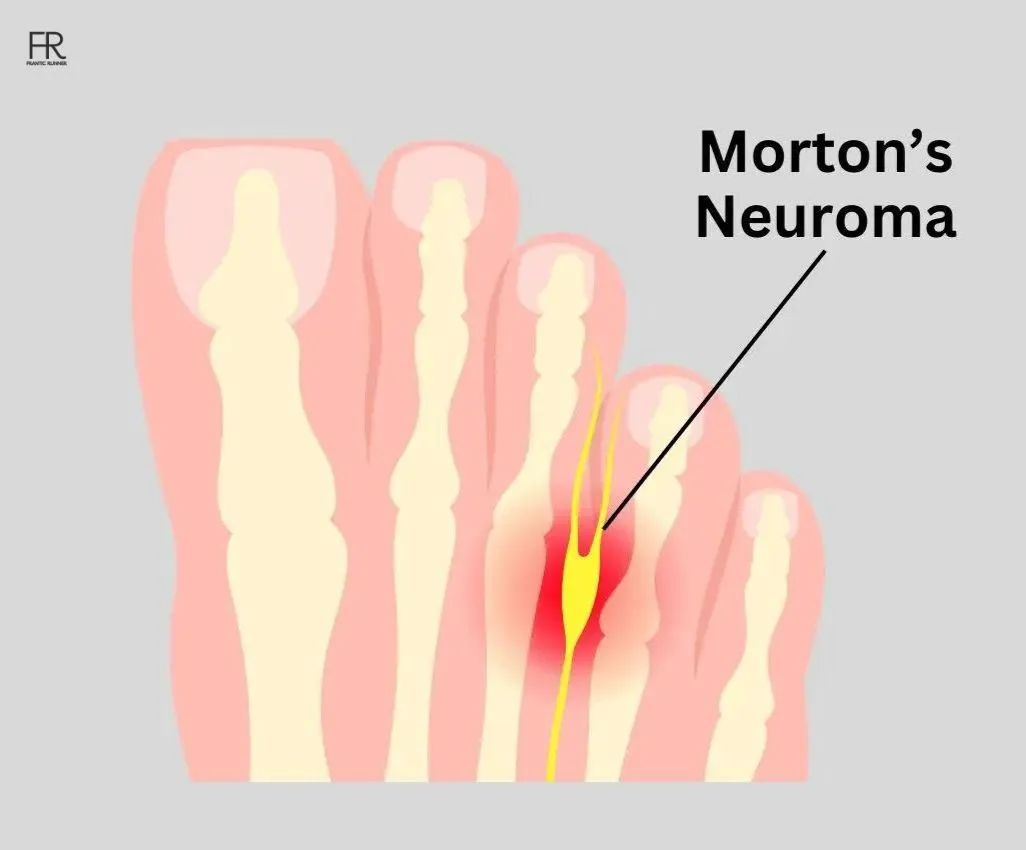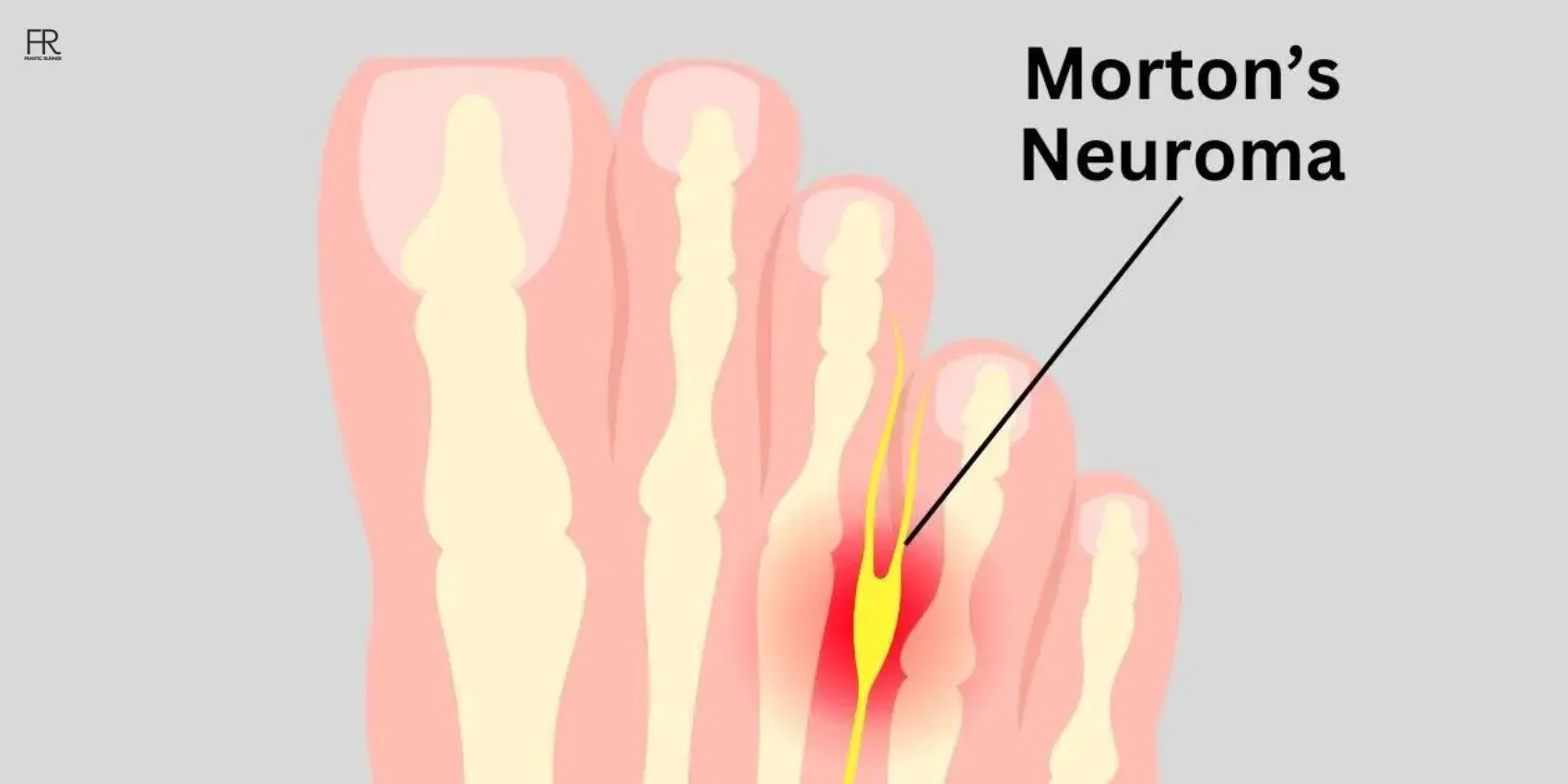Running With Morton's Neuroma (Treatment & Prevention Tips)
Did you ever feel the ache in the ball of your foot and the feeling of wet leather sticking while running? If you are not sure about this strange numbness, it might be a severe disorder, Morton’s neuroma, or intermetatarsal neuroma which is severe painful, hard, and annoying. It happens in your foot and makes it hurt. Let’s understand it better!
Running with Morton’s neuroma can induce aches between the third and fourth toes. To prevent intermetatarsal neuroma, wear wide shoes, metatarsal pads, anti-inflammatory measures, and custom orthotics. Empower your stride and safeguard your foot health for a seamless running experience.
In this blog, we will explore the comprehensive guide about Running with Morton’s Neuroma, its surgical and non-surgical treatments, and useful tips for future prevention. If you’re a beginner in running or a professional one, this piece of writing is covering the best guide. Let’s unravel the secrets to continue your running journey with comfort and confidence
What is Morton’s Neuroma?
Morton’s neuroma is a disorder of compressive neuropathy of the interdigital nerve affecting runners and other sportsmen that causes burning pain in the toes. It occurs when the foot nerve is inflamed or squeezed, causing acute, shooting sensations that make your running hard and cause pain.
A neuroma is an inflammation of nerves between the metatarsal bones in the surrounding area of the toe that exerts pressure on the nerve and causes foot pain and aches.
Some anti-inflammatory measures can help to cure it. Secondly, avoiding stress on the ball of the foot can manage symptoms. Otherwise, confer with a professional one for personalized advice.
It is a common injury in runners and athletes that develops in many portions of the foot. But the most common area is the third and fourth toes.
The common causes of neuroma that contribute to potential issues in running with Morton’s toe and foot health are running in narrow shoes, and running too much and quickly.
“ High arches, and being flat-footed can increase the risk and stiffness through the foot and ankle.”
.
Diagnosis of Morton’s Neuroma
- Evaluate the foot and ankle skin for pressure points.
- Screen for misalignments causing forefoot pain.
- Apply pressure between toes to pinpoint pain areas.
- Assess the toe joint range of motion.
Effective Treatments for Morton's Neuroma - Happy Feet
The treatment of neuroma is a serious challenge for sprinters, as well as for runners. This illness is cured according to the relentlessness of pain. If you are experiencing mild pain attacks, it can be treated by therapy or medicine. However, surgery can treat severe pain or difficulty in movement.
Use these methods to treat this:
1. Without Surgery Treatments for Morton’s Neuroma
This treatment focuses on a non-invasive approach. In this method, all you need to do is to take a small pause from running and other physical activities causing pain. This is a non-surgical method for curing minor discomfort. You can also follow these convenient ways to alleviate symptoms
- Choosing The Right Shoes
Wearing medicated shoes or those with a wide toe box is an amazing method to reduce pain. Such footwear reduces pressure on affected nerves providing a comfortable walk.
Related Article: “7 Best Running Shoes For Morton’s Neuroma (Podiatrist’s Opinion)“
- Icing
The application of ice packs on affected areas can reduce inflammation and aches. Also, it reduces swelling in case.
- Foot Padding
An effective way of curing Morton’s Neuroma is using cushioned shoes with enhanced padding. Metatarsal pads also help to reduce stress on the neuroma.
- Physiotherapy
Getting required therapy improves foot strength. You can also feel better flexibility and gait. Try exercises like stretching and massage to reduce discomfort and aches.
- Use Anti-inflammatory Medicines
Therapy and medications help to discharge pressure resulting in reduced pain. NSAIDs and naproxen help to manage inflammation
2. Treatment With Medical Procedures And Surgeries
In some cases, conservative treatment fails to relieve pain resulting. Doctors only treat this stage of illness through a surgical approach. This works by removing inflamed nerves.
Apart from nerve removal, some surgeries include numbness of the affected area or freezing of the nerve. Orthopedic surgeons perform it after appropriate check-ups.
Future Prevention Tips for Running with Morton’s Neuroma
Below stated are some handy tips to prevent this interdigital nerve damage in the future:-
1. Foot Exercises
Regularly stretch your feet and calves for improved mobility to prevent Morton’s neuroma and foot issues while running.
2. Select Wide Shoes
Opt for shoes with wider toe box like Altra or Vivobarefoot to allow toes to spread comfortably.
3. Avoid Quick Movement And Too Much Running
Limit running duration to reduce foot strain and avoid high heels or footwear causing front foot pressure.
4. Toe Yoga
Enhance your toe space with spacers and toe yoga, and strengthen foot muscles with specific exercises.
If continued foot pain occurs, consult a Doctor of Physical Therapy for a personalized treatment plan and prompt recovery.
If Morton’s Neuroma Is Untreated?
It might result in severe nerve damage or persistent discomfort in the afflicted toe foot, if not treated on time. Consult a doctor as soon as you feel any symptoms of this disease. The sooner a clinician detects and treats Morton’s neuroma, the less likely you will have problems.
Conclusion
This article covers the best guide for runners who are suffering from Morton’s neuroma. This neuropathic disorder is awfully painful for sportsmen, but it’s not a forever disease. You can control it with the help of wider shoes, toe yoga, foot exercises, and avoiding high-impact movements.
Select the “ 7 Best Running Shoes For Morton’s Neuroma (Podiatrist’s Opinion)” to enhance your running.
Frequently Asked Questions (FAQs)
Yes, you can if you perform low-impact exercises. Swimming and cycling are low-impact workouts that do not exert excessive pressure on the metatarsal bones. This way your inflamed nerves between 3rd and 4th toes remain unaffected.
Do not wear narrow shoes and neither engage in high-impact activities. Avoid putting excessive pressure on the affected foot.
Running can worsen symptoms of Morton’s neuroma. However, choosing the “7 Best Running Shoes For Morton’s Neuroma (Podiatrist’s Opinion)“ can help some athletes continue running with Morton’s toe.



